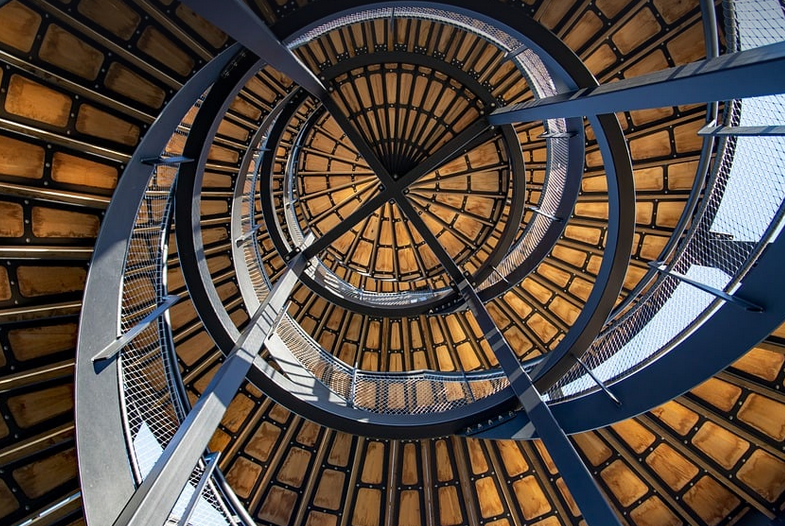
Creating a Calm & Collected Haven
Europe, with its rich history and distinct cultures, has influenced interior design for centuries. From the sleek functionality of Scandinavian minimalism to the cozy charm of French country houses, Europe offers a vast array of styles that translate beautifully into our homes today. This year in 2024, European style interiors are more popular than ever, captivating homeowners with their timeless elegance and adaptable versatility.
A Blend of Old and New
European style design isn’t just about replicating a specific country or era; it’s about finding the harmonious balance between classic elements and modern sensibilities. You can seamlessly blend historic architectural details with contemporary accents to create interiors that are both timeless and refreshingly unique.
A key aspect of European interior design is embracing a sense of order and functionality. Think clean lines, neutral color palettes, and purposeful furniture arrangements. This approach prioritizes comfort and ease of use, aiming to minimize clutter and maximize space efficiency.
The Essence of Simplicity
The simplicity of European design is often attributed to its historic roots. It’s about using less as a means to achieve more, focusing on the essentials and highlighting the beauty in simplicity. This translates into choosing timeless pieces that will withstand trends and stay relevant for years to come.
The Power of Natural Light
The abundance of natural light found throughout many European cities is a vital part of their interior design ethos. Bringing nature indoors with large windows, skylights, and strategically placed mirrors can create a bright and airy feel, highlighting the beauty of both the architecture and the surrounding landscape.
Embracing Natural Materials
From stone countertops to wooden floors, natural materials are integral to European style interiors. These materials enhance the warmth, texture, and character of spaces while adding an element of grounding and serenity that transcends trends.
Layering with Textures
The use of textures is another essential element of European design, offering depth and dimension to a room. Incorporating various textiles like linen, wool, and velvet can add visual interest and warmth to the space. From plush throws to woven rugs, these textures speak volumes about the homeowner’s personality and aesthetic.
The Psychology of Color
European design embraces muted palettes as a default choice; this reflects a sense of calm and tranquility. Neutrals like white, beige, grey, and even black are frequently used throughout interiors to create a serene atmosphere. However, a touch of color can be easily incorporated into the space. This allows for personality expression while maintaining an overall feeling of sophistication.
The Joy of Imperfection
A European interior often features a sense of “lived-in” charm. Rather than striving for perfection, there is an appreciation for imperfections and a celebration of everyday life. This translates to handwoven fabrics, antique furniture pieces, and vintage accents that tell stories and evoke a sense of history.
A Timeless Palette
European style interiors often utilize timeless color palettes like white, brown, grey, beige, and cream. These muted tones create a neutral backdrop that allows personality to shine through in the form of artwork, textiles, or accents. This approach emphasizes the beauty of simplicity and longevity.
Comfort is King
European design places a high priority on comfort and functionality. It’s about creating spaces where people can relax and unwind with ease. This translates to using furniture that invites you to sink in, like plush sofas, cozy armchairs, and inviting dining tables.
Bringing the Outdoors In
One of the most defining characteristics of European style interiors is the seamless integration of nature indoors. Large windows, skylights, and balconies are common features that allow for natural light to flood spaces, bringing a sense of serenity and connection to the outdoors.
A Touch of History
The history of Europe often lends inspiration to modern interior design. This can be as simple as incorporating elements like antique furniture, hand-crafted woodwork, or historical prints. These touches add layers of character and depth to a room that have been developed over centuries.
The Art of Minimalism
European style interiors often embody the principles of minimalism. A sense of uncluttered order is key. By minimizing unnecessary items, focusing on functionality over ornamentation, and choosing pieces with lasting design, European spaces create a sense of calm and clarity.
Incorporating Global Influences
European style interiors are not confined to traditional styles; they often draw inspiration from different cultures and regions around the world. This can manifest in the use of specific elements like Moroccan rugs, Japanese screen doors, or Southwestern wooden accents, adding a unique touch to an already stylish space.
Embracing Sustainability
European style design is increasingly embracing sustainability as homeowners look for ways to live more sustainably and reduce their environmental impact. This can involve choosing eco-friendly materials like reclaimed wood or recycled glass, opting for energy-efficient appliances, and minimizing waste through thoughtful choices.
The Key to European Style Interior Design
The key to achieving a successful European style interior is embracing simplicity, functionality, and timeless elegance. By integrating natural materials, incorporating neutral color palettes, and prioritizing comfort and ease of use, you can create a space that feels both sophisticated and welcoming. It’s about creating a sanctuary where you can truly relax and find your peace.



